In Haiti and the Dominican Republic, the lakes are flooding farmland, swallowing communities and leading to deforestation, baffling climate scientists.
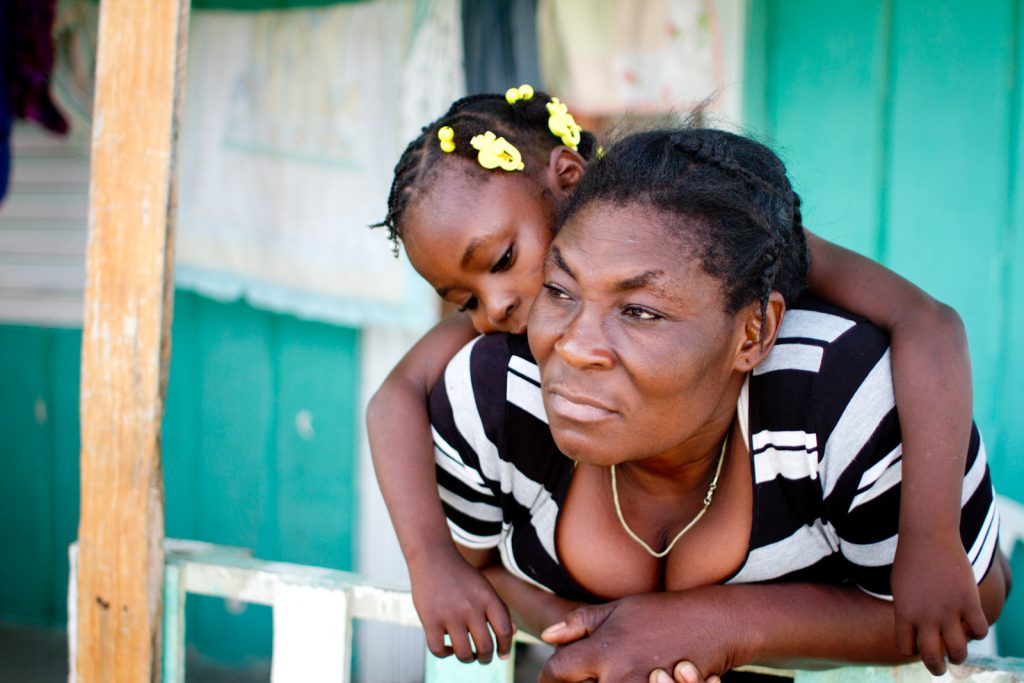
Jacob Kushner
Story and photos by Jacob Kushner for National Geographic
In Haiti and the Dominican Republic, the lakes are flooding farmland, swallowing communities and leading to deforestation, baffling climate scientists.

Jacob Kushner
Story and photos by Jacob Kushner for National Geographic

Photo/Amy Lombard
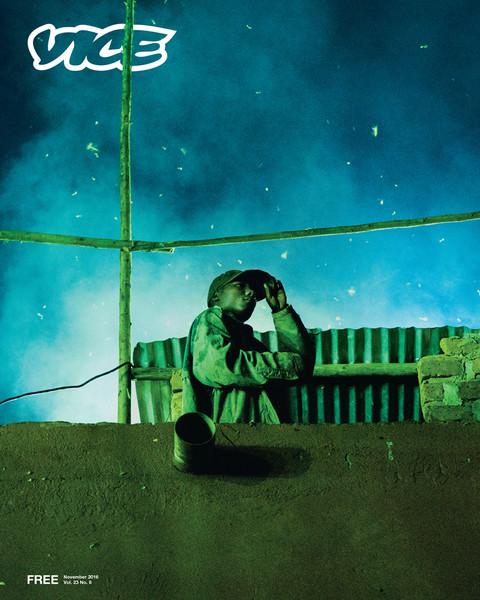
Meet Fathom, the world’s first-ever cruise for voluntourists: vacationers who don’t just want to do beaches, spas, and shopping, but do good.
Spoiler: It doesn’t go as planned.
Impact update: Two weeks after my VICE investigation published, Carnival Corp., the world’s largest cruise operator, announced it would discontinue the cruise.
Published in the November 2016 issue of
Listen: Tiny Spark
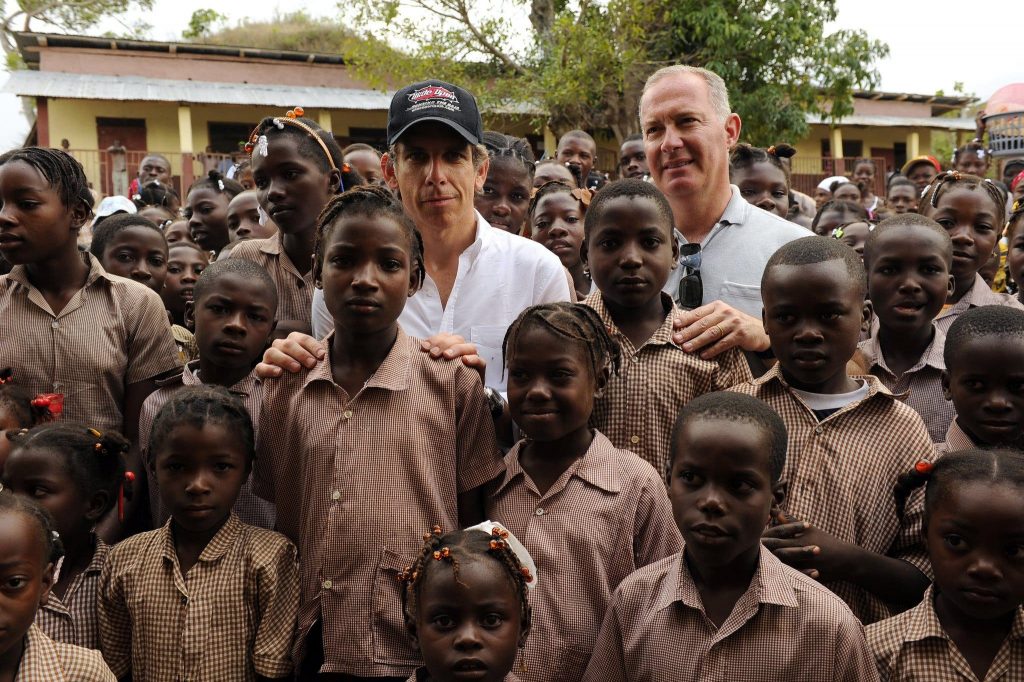
Photo: Ben Stiller visiting Port-au-Prince, Haiti, in April 2010 as part of a school-rebuilding project in which he was involved. Kevork Djansezian/Getty Images
Each year, 1.6 million voluntourists descend upon the Haitis of the world.
Read: The New York Times Magazine
The plight of Kenya’s LGBT Refugees
“God has a book of life,” Mugisa told his worshipers. “He remembers your name. But to be written in this book you need to do good.” Mugisa turned to his congregants. “Mulondo, Lujja, Kasule, Nansamba: You want to be able to say, ‘God, I served you when I was in Kakuma camp.’ You want to be able to say, ‘I served you in Uganda. Remember me. This is what I have done, remember me.'”
Mugisa glanced around his congregation of LGBT worshipers, catching the eyes of a few of them. Unable to ignore the trepidation on their faces, he comforted them. “Trust me—one day we will be out of this place.”
Honorable Mention (runner-up), 2016 Immigration Journalism Award, The French-American Foundation; Official Nomination, “Outstanding Magazine Article,” 2017 GLAAD Media Awards; Shortlist, 2017 One World Media Print Award.
Read: VICE Magazine
As dawn breaks, nine Kenya Wildlife Service rangers dressed in camouflage and brandishing rifles assemble at an airstrip. They are equipped with a Cessna, a helicopter, and a caravan of Toyota Land Cruisers. Their mission: find, tranquilize, and collar Tsavo’s savanna elephants to see how well they traverse a new rail line that has recently split their habitat in two. It is the first time in history that elephants are being collared specifically to study how they interact with human infrastructure.
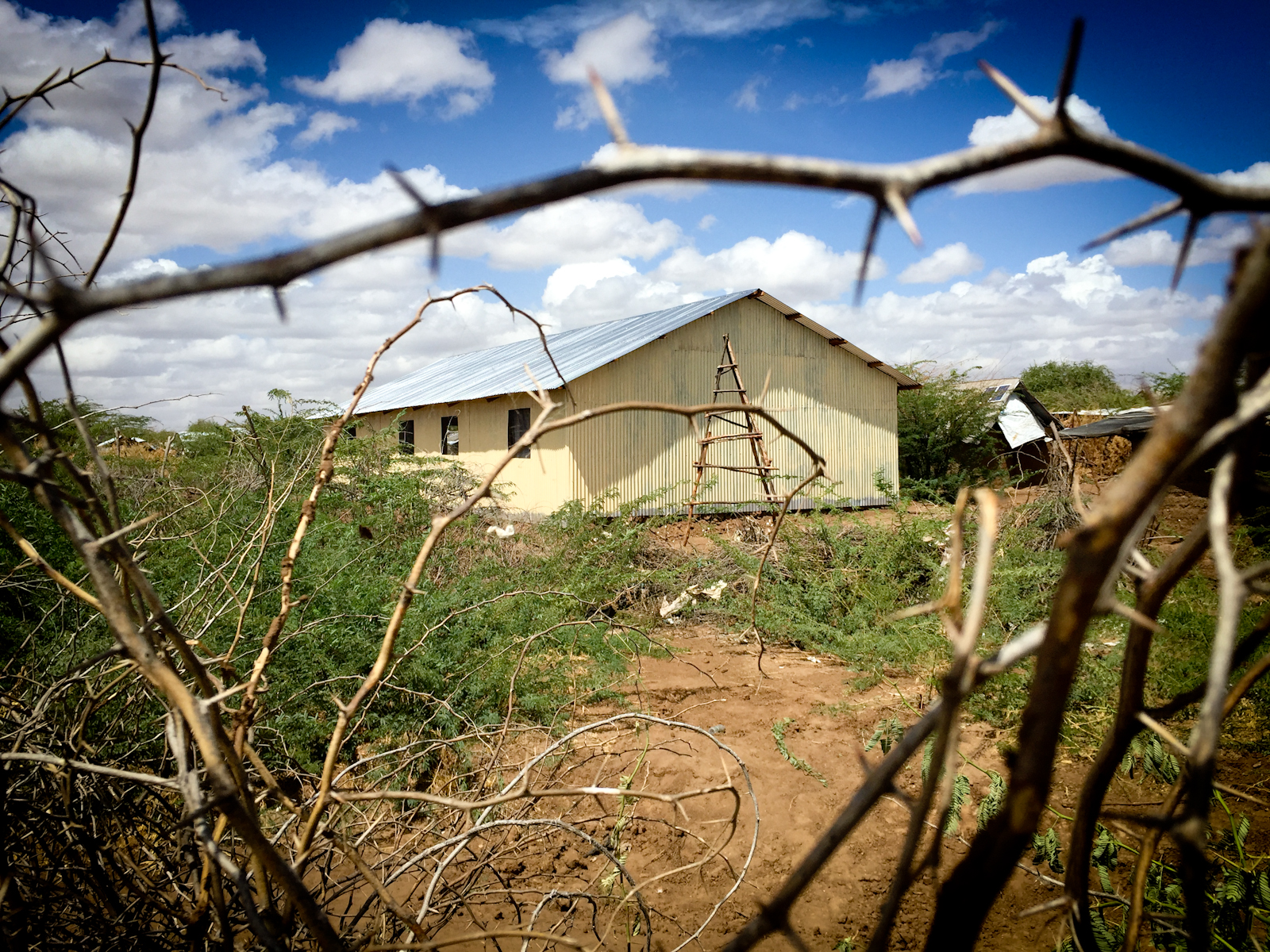
/Jacob Kushner

Inside Kakuma, Kenya’s 25-Year-Old Refugee Camp
In 1992, the U.N. formally recognized Kakuma as a refugee camp — a temporary shelter. A quarter-century later, Kakuma hosts more than 150,000 refugees — victims of all manner of East African calamities, from Ugandan homophobia to political unrest in Burundi. Presently, it is filling up once again with people fleeing civil war in South Sudan.
Long before the Syrian civil war, before millions of people began fleeing to camps in Turkey, Jordan, and elsewhere in search of safety, Kakuma was something of an icon in the global refugee crisis. Today, it stands as a solemn reminder of the permanence of humanity’s displaced masses.
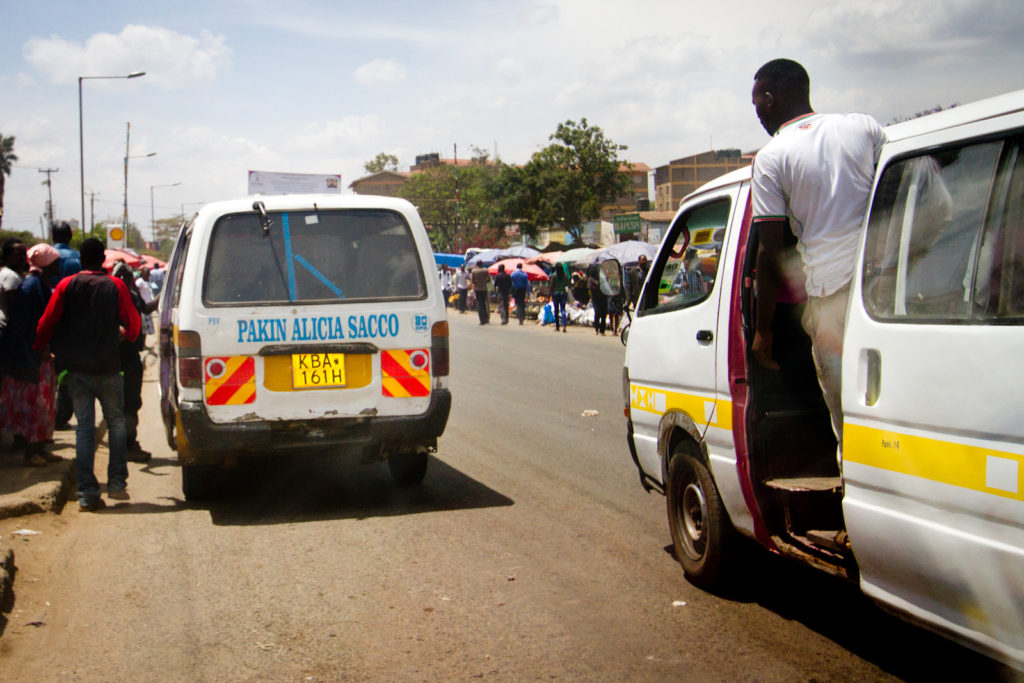
/JACOB KUSHNER
NAIROBI, Kenya — On a sunny afternoon in Nairobi, 37-year-old Francis Raymond Adika climbs into the front seat of a matatu, or public transit van, and slides next to the driver.
“I lost my brother in an accident,” says Adika. On August 15, 2001, a matatu was speeding down the wrong side of a two-lane road in Nairobi trying to pass traffic. When it swerved back into the correct lane it slammed headfirst into a truck. Adika discovered his brother’s body in the Nairobi morgue. He was 19, just days away from his high school graduation.
A Jesuit missionary who travels extensively across Africa, Adika says it isn’t just in Kenya where people lose their lives to reckless driving. “I lived in Tanzania, Zimbabwe, Zambia – the carnage was just the same.”
Each year, 1.24 million people die in road accidents worldwide. By 2030 that number is expected to triple to 3.6 million, making road deaths the fifth-largest cause of death in the developing world – worse than AIDS or even malaria, according to the World Health Organization. Africa is the hardest hit, with 26 road deaths for every 100,000 people – nearly 50 percent above the global average.
But a series of scientifically rigorous, randomized control studies by Georgetown University may have found a simple way to dramatically reduce deaths on East African roads. By placing stickers inside buses and matatus that encouraged passengers to tell their driver to slow down, researchers discovered that the number of insurance claims fell by half for long-distance vehicles and by one-third overall.
Read the full article at U.S. News & World Report.

/ JACOB KUSHNER
The death toll from Hurricane Matthew in Haiti—now officially at 336, though likely far higher—is a big part of why the world is paying attention to Haiti right now. It’s in the headlines, it’s in the ledes. It’s the reason news agencies continuously hunt for the highest figures: The higher your death toll, the more fresh, the more ominous your reporting appears, and the more likely it is that TV news stations, newspapers and news websites will choose your story over your competitor’s.
We should care that hundreds of people have died. But we shouldn’t only care when a storm hits. More than 9,000 Haitians have died from cholera in the six years since the United Nations introduced the disease there. Diarrhoeal diseases kill at least 4,600 Haitians each year. Those diseases are usually brought on by lack of clean water and sanitation — things with relatively simple and low-cost fixes that neither Haiti’s government nor the international aid community has invested in sufficiently to fix.
A friend of mine who works for a major aid organization in Haiti messaged me last week that “it’s awful trying to get to the south with the bridge down, blocked roads, etc. So sad.” She’s talking about a bridge on the same road I traveled back in 2010 to cover hurricane Thomas as it struck Haiti’s south. Indeed, bridges in Haiti fall frequently when storms hit. Without them, aid workers can’t get to the affected areas easily, or at all.
How many of us have opened our wallets in the past five years to donate to the construction of bridges in Haiti — or roads?
More to the point, how many news outlets that are gaining clicks and ad revenue by reporting on the current death toll in Haiti bothered to report on any solutions to Haiti’s chronic infrastructure or health problems in the past? Absent any solutions-oriented coverage, the recent barrage of news about the tragic toll of Hurricane Matthew feels an awful lot like disaster porn.
Read the full Op/Ed at the UW-Madison Center for Journalism Ethics or at MediaShift.
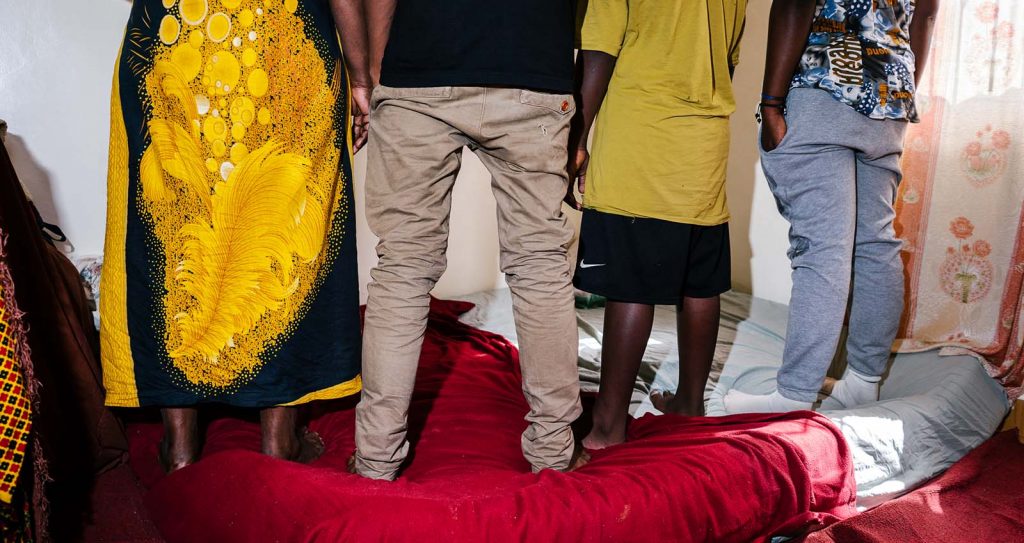
Jake Naughton
“We have a bad, bad story,” begins Gloria Ibara, a refugee from Burundi and the mother of four. Sitting on a mattress in a simple Nairobi apartment, she tells me of her problem: “They want to kill our family.”
Gloria, whose bright smile accents her worn face, was born in rural Gitega province to a family of farmers. As her children grew, Gloria came to realize her son Eric was gay. (The names of the family members have been changed out of concern for their safety.)
At first “I told him to stop, that it’s not good,” Gloria says. But over time she decided that “that’s the way he was, and he couldn’t change it.” So she went on loving and caring for him just the same.
In many parts of East and Central Africa where homophobia is rife, parents react harshly on learning that a child is gay. Parents feel enormous pressure to either “fix” their gay kids or disown them. I’ve met dozens of LGBT refugees who have fled their home countries and escaped to Kenya, and only one—a woman, also from Burundi—wasn’t disowned by her family. So when Gloria learned that her son Eric was gay, it was extraordinary for her not to reject them. Stunned as she was when she later found out that her older son, Claude, then well into his teens, too was gay, she supported him too. It’s for that reason that they are now a family on the run.
Read their story at TakePart.


(Illustration: Chad Hagen)
Randomized controlled trials are the popular centerpiece of an emerging data-driven approach to figuring out precisely the best way to end poverty. Can a return to the scientific method fix the global aid industry?
For too long, “accountability” in the aid industry has meant nothing more than ensuring that a donor’s money was spent the way an agency said it would be. Rarely did organizations examine whether their spending achieved a positive impact (improved access to water, for example), much less one that stood the test of time (meaning the well didn’t dry up).
But recently, many aid organizations, including theInternational Rescue Committee, a New York humanitarian aid group specializing in refugee assistance, have used RCTs to, among other things, evaluate methods for nudging parents in Liberia toward more effective parenting techniques and tocreate highly effective community savings-and-loan programs to combat poverty in Burundi. It’s easy to see why charities are attracted to RCTs: They can make an aid agency’s work more efficient and ge nerate solid evidence of progress to show funders.
nerate solid evidence of progress to show funders.
As organizations continue to conduct more of them, RCTs are disproving many myths upon which we’ve designed development aid for years, not least of which is our longtime preference for projects over cash. If the data shows, as the RCT of GiveDirectly’s Kenya program did, that it’s most effective to hand a family $1,000 with no strings attached, then that’s precisely what we should do.
Read: July/August print edition of Pacific Standard Magazine


Photo / JACOB KUSHNER
On an overcast morning in Nairobi, commuter buses drive down a crumbling road into Kibera, a densely packed slum. A sign at the bus station reads “public toilets,” but the doors are locked.
It’s estimated that Kibera has just one toilet for every 2,500 of its approximately 250,000 residents. Without toilets to relieve themselves, people “use any means, whether it’s a [plastic] bag or a can,” explained Fred Amuok, Community Liaison for a Kenyan rights-based organization called Umande Trust.
The World Health Organization estimates that 1.5 million people die every year from diarrhea, often the result of poor sanitation. There’s also a financial cost: studies show that Kenya loses US$324 million each year in missed work hours due to sickness brought on by poor sanitation. According to the sanitation company Sanergy, four million tonnes of fecal sludge escape into Kenya’s waterways and fields every year.
But Umande Trust has come up with an innovative approach to providing affordable toilets for Kibera’s residents and turning human waste into cooking fuel–one that’s already been working for more than a decade.
Read the full story as it appeared on Impact Journalism Day 2016 at Solutions&Co by SparkNews.

An HIV-positive, gay refugee from Uganda stands outside the house he shared with dozens of other LGBT refugees on the outskirts of Nairobi. JAKE NAUGHTON
For months, nearly two dozen gay, lesbian and transgender Ugandans had been living in a large house on the outskirts of Nairobi in an area called Rongai. Long after a court struck down Uganda’s infamous anti-gay law—dubbed the “Kill the Gays” bill for a death penalty provision in an early draft—LGBT people in Uganda were still being disowned by their families, hunted down by neighbors, jailed by police, even killed. Hundreds fled Uganda—mostly to Kenya, where they are faring little better.
Many of these refugees grew up in urban, middle-class families and loathe living in a hot, squalid refugee camp, as Kenyan law requires of all refugees. They are city people, accustomed to partying at secret gay clubs in Kampala.
One afternoon last December, a Kenyan man came to the gate of the Rongai house with a warning: Neighbors were plotting to attack the gay refugees that night and run them out of town. The refugees didn’t wait. They fled, scattering to different apartments across the city.
Read in the June 10, 2016 print edition of Newsweek

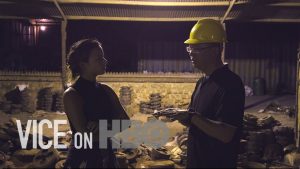 In 2009, China surpassed the United States as the continent’s largest trading partner. By 2012, its trade with Africa was double the United States’.
In 2009, China surpassed the United States as the continent’s largest trading partner. By 2012, its trade with Africa was double the United States’.
Western media tend to inflate the rhetoric surrounding China’s rise in Africa. Headlines are often resentful and sometimes border on fear-mongering: China is “winning” Africa from the West. The United States must “catch up” to China if it hopes to maintain economic, security and cultural relevance in Africa. A monolithic “China” sees Africa as a place to get rich quick, and doesn’t care much about the consequences.
But behind these hyperbolic headlines there are people, actual Chinese moving to Africa — one million over the past 15 years according to the rough but generally accepted estimate.
“Big projects completed by big, government-owned companies dominate the headlines about the advancing Chinese agenda in Africa,” wrote Howard French, a longtime New York Times correspondent in both China and Africa, in China’s Second Continent. “But history teaches us that very often reality is more meaningfully shaped by the deeds of countless smaller actors, most of them for all intents and purposes anonymous.”
Read the full article at VICE, and watch the full documentary, Chinafication of Africa, which I helped produce, on VICE HBO on April 22nd, 2016.

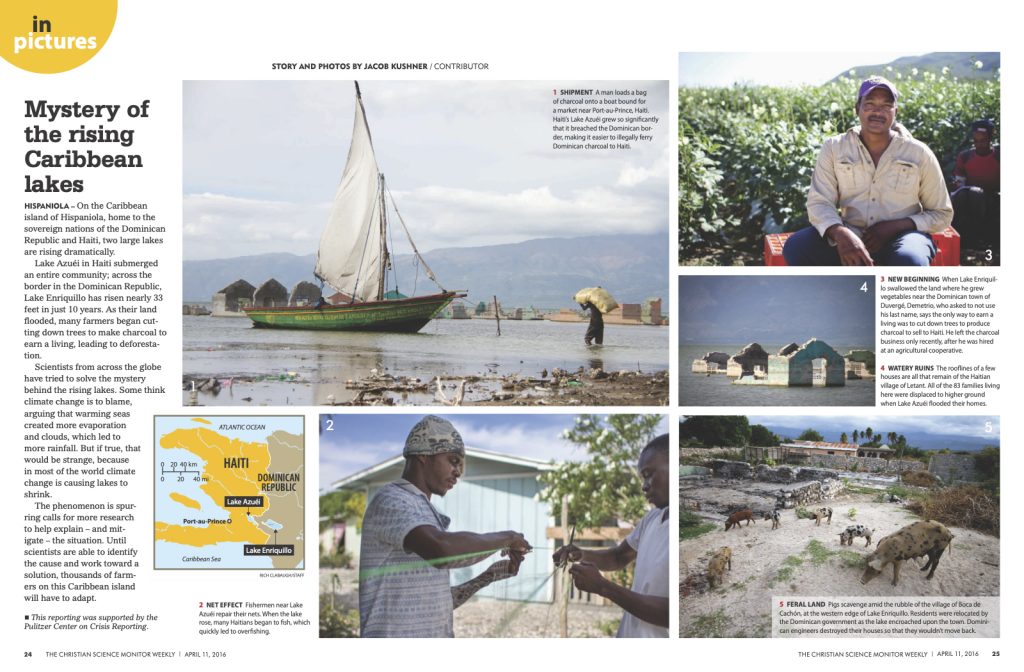
HISPANIOLA – On the Caribbean island of Hispaniola, home to the sovereign nations of the Dominican Republic and Haiti, two large lakes are rising dramatically.
Lake Azuéi in Haiti submerged an entire community; across the border in the Dominican Republic, Lake Enriquillo has risen nearly 33 feet in just 10 years. As their land flooded, many farmers began cut-ting down trees to make charcoal to earn a living, leading to deforestation.
Scientists from across the globe have tried to solve the mystery behind the rising lakes. Some think climate change is to blame, arguing that warming sea created more evaporation and clouds, which led to more rainfall. But if true, that would be strange, because in most of the world climate change is causing lakes to shrink.
 The phenomenon is spur- ring calls for more research to help explain – and mitigate – the situation. Until scientists are able to identify the cause and work toward a solution, thousands of farmers on this Caribbean island will have to adapt.
The phenomenon is spur- ring calls for more research to help explain – and mitigate – the situation. Until scientists are able to identify the cause and work toward a solution, thousands of farmers on this Caribbean island will have to adapt.
This reporting was supported by the Pulitzer Center on Crisis Reporting.
 When Europeans began arriving in the New World at the end of the 15th century, they used the region to source silver, gold, coffee, and wool. Today, China is the foremost trading partner with several Latin American countries, and buys oil from Venezuela, Mexico, and Ecuador; iron ore from Brazil; beef from Argentina; and copper from Chile and Peru.
When Europeans began arriving in the New World at the end of the 15th century, they used the region to source silver, gold, coffee, and wool. Today, China is the foremost trading partner with several Latin American countries, and buys oil from Venezuela, Mexico, and Ecuador; iron ore from Brazil; beef from Argentina; and copper from Chile and Peru.
According to a new book, The China Triangle: Latin America’s China Boom and the Fate of the Washington Consensus, by Boston University global development professor Kevin P. Gallagher, Chinese investment in Latin America is outpacing even its famed liaison with Africa.
Gallagher argues that the Washington Consensus—by which the U.S. pressured Latin American countries to open their markets to free trade and deregulation during the 1990s—failed to help those states develop. “While the United States wasn’t paying attention, Latin America quickly became of the utmost strategic importance for China—as a source for many of the key natural resources it needs to grow its economy and the appetites of more than a billion people,” he writes.
But therein lies the hitch in Gallagher’s thesis. The antiquated notion that the U.S. and China are in a sort of dichotomous or binary economic arms race—a sense highlighted by the “triangle” reference upon which his book is titled—overlooks the fact that these two nations cannot possibly account for all of Latin America’s gains and losses during the two decades that he studies. If Gallagher’s strongest argument is that China’s Latin American presence is surprisingly large, his weakest is that it is almost singularly responsible for the region’s recent growth.
Read the full book review at Columbia University Global Reports.